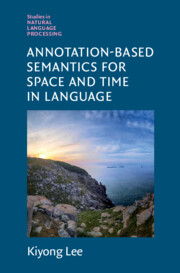Book contents
- Frontmatter
- Dedication
- Contents
- Foreword by James Pustejovsky
- Preface
- Acknowledgements
- Part I Fundamentals
- Part II Time and Events
- 7 Temporal Ontology
- 8 Normalizing TimeML with Some Modifications
- 9 Extending the Range of Temporal Annotation
- 10 Proper Interpretation of Temporal Relators
- Part III Motion, Space, and Time
- References
- Index
10 - Proper Interpretation of Temporal Relators
from Part II - Time and Events
Published online by Cambridge University Press: 05 August 2023
- Frontmatter
- Dedication
- Contents
- Foreword by James Pustejovsky
- Preface
- Acknowledgements
- Part I Fundamentals
- Part II Time and Events
- 7 Temporal Ontology
- 8 Normalizing TimeML with Some Modifications
- 9 Extending the Range of Temporal Annotation
- 10 Proper Interpretation of Temporal Relators
- Part III Motion, Space, and Time
- References
- Index
Summary
Temporal prepositions trigger various temporal relations over events and times. In this chapter, I categorize such temporal relators into five types: (i) anchoring (at, in), (ii) ordering (before, after),(iii) metric (for, in), (iv) bounding (from -- till), and (v) orienting (time interval + before, after). These temporal relators are analyzed with respect to the tripartite temporal configurations <E,R,T>, where E is a set of eventualities, R is a set of temporal relators, and T is a set of associated temporal structures, which subsume metric structures. Temporal relators combine with temporal expressions to form temporal adjuncts, either simple or complex. Complex temporal adjuncts introduce time intervals as nonconsuming tag in annotation, while relating eventualities to temporal structures. Each temporal relator r in R combines with a temporal structure t in T as its argument to form a temporal adjunct, while relating an eventuality e in E of various aspectual types such as state, process, or transition to an appropriate temporal structure t in T. This chapter clarifies such temporal relations by annotating and interpreting event and temporal base structures and their relations.
Information
- Type
- Chapter
- Information
- Annotation-Based Semantics for Space and Time in Language , pp. 287 - 334Publisher: Cambridge University PressPrint publication year: 2023
